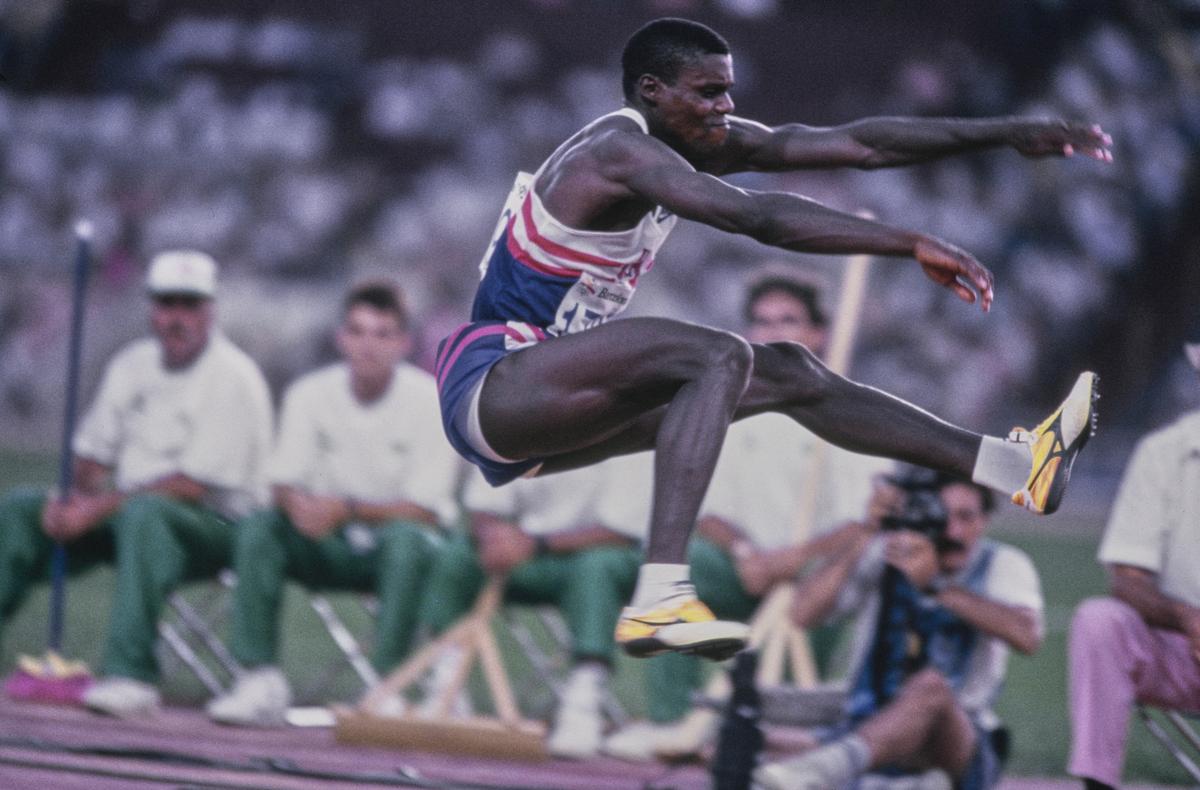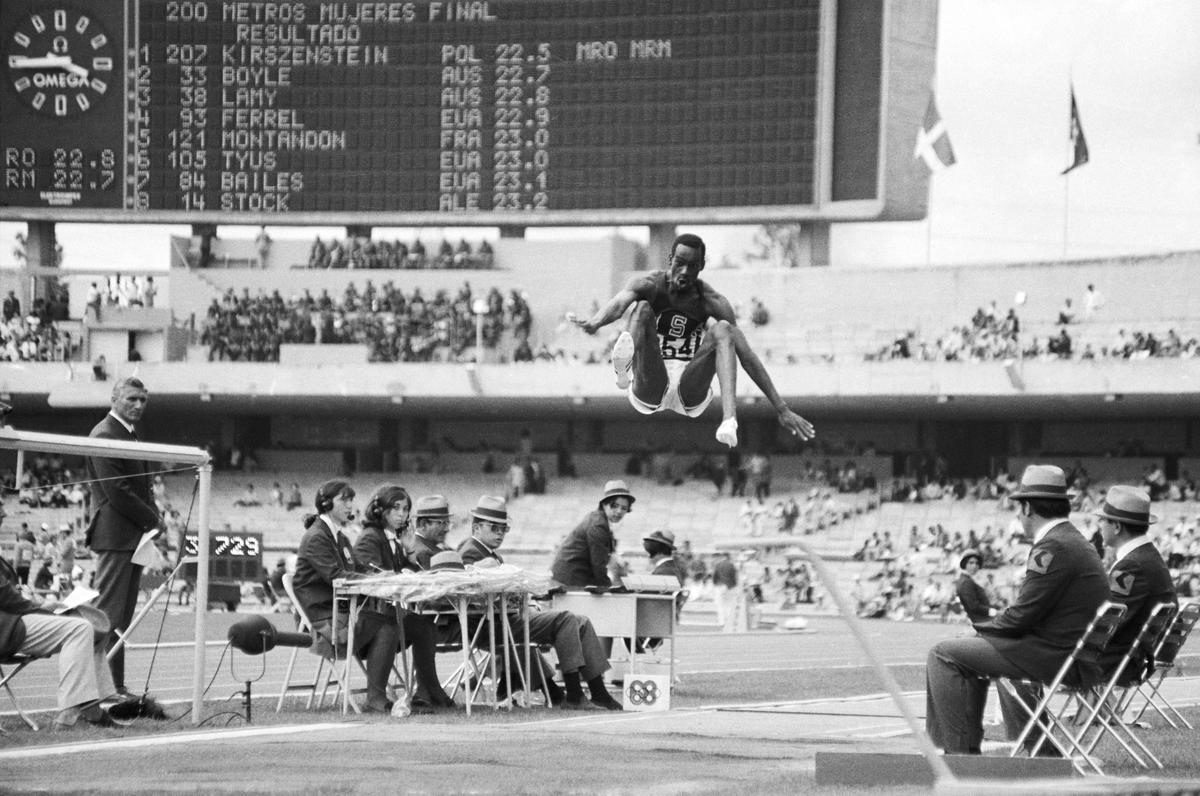In April 2022, the legendary Carl Lewis put out a blunt assertion on social media platform X (then Twitter) that lengthy bounce was the toughest occasion in monitor and subject. “There have been 5 male world report holders [sic: breakers] within the lengthy bounce since 1936,” Lewis mentioned. “The current outside report is 31 years previous… Appears fairly robust to me. What different occasion is that troublesome to grasp?”
In fast time, Lewis was roundly criticised and even referred to as an consideration seeker, just about consistent with X’s picture of being a poisonous crucible of abuse and simplistic narratives. It didn’t matter that Lewis was a nine-time Olympic gold medallist, with 4 of these within the lengthy bounce in a streak that began at Los Angeles 1984 and ended at Atlanta 1996.
The Carl Lewis argument
Lewis’ rationale was that Mike Powell’s world report of 8.95m on the Tokyo World Championships in 1991 was — and remains to be — standing. The identical with Bob Beamon’s Olympic report of 8.90m set at Mexico Metropolis 1968. Beginning 1970, the boys’s excessive bounce, triple bounce and pole vault — the opposite three bounce occasions — have seen 12, 5 and 14 athletes higher the very best mark. Lengthy bounce has seen a grand whole of 1. Of the six record-holders from 1935, Powell, Beamon and Jesse Owens have every held it for 23 years or extra.
In equity, the longevity of a world report shouldn’t all the time decide the problem degree of an occasion. If that’s the case, the ladies’s monitor races needs to be the toughest of all, for the 100m, 200m, 400m and 800m information have remained intact for the reason that Eighties. However Lewis’ pondering had greater than a kernel of reality — that lengthy bounce was among the many hardest to grasp, if not the hardest, and the shortage of development in world report distances was considered one of its prime fallouts.
“Lengthy bounce is a mix of pace, elastic power and approach,” James Hillier, the athletics director at Reliance Basis, advised The Hindu. “For those who have a look at the runway knowledge from the Olympic Video games, the winner has had the quickest occasions. The problem is the way you switch horizontal pace, which is perhaps 10 m/s or increased for prime lengthy jumpers, right into a vertical raise off the board.
“You must hit that candy spot. You will have to have the ability to run quick sufficient as a result of the pace is what carries you ahead. However you also needs to be operating inside your self so that you could coordinate and time a take-off. In case you are driving a automotive at 30 miles an hour, and somebody tugs the steering wheel, the automotive will simply go off a bit of bit however you may appropriate it. In case you are going at 100 miles an hour, a slight tug may end up in a really unhealthy accident. It’s the similar in lengthy leaping.”

Nearly as good because it will get: A four-time Olympic champion within the lengthy bounce, Carl Lewis as soon as gained 65 consecutive occasions within the self-discipline. | Photograph credit score: Getty Photos
Between the 40m runway and the bounce lies the 20cm take-off board the place pin-point accuracy is non-negotiable. Leap from a number of centimetres behind and you’ll find yourself dropping that a lot distance. Leap from too shut, the margin of error for a foul shrinks.
Lewis’ greatness lay in the truth that he had mastered this troublesome balancing act. At Los Angeles in 1984, the American gained the 100m, 200m, 4x100m relay races and the lengthy bounce. 4 years later in Seoul, he once more accomplished the 100m-long bounce double.
Simpler to medal
Although he by no means held the lengthy bounce world report, the distances Lewis leapt have been prime draw — 8.54m in 1984, 8.72m in 1988 and eight.67m in 1992. In distinction, Brit Greg Rutherford took gold at London 2012 with 8.31m; American Jeff Henderson at Rio 2016 with 8.38m, and Greek Miltiadis Tentoglou at Tokyo 2020 and Paris 2024 with 8.41m and eight.48m respectively. And immediately, the variety of elite athletes competing in each sprints and lengthy bounce is near-zero.
In accordance with Powell, the lengthy bounce’s stagnating distances have been a certain signal that the already robust self-discipline was regressing. In a media interplay in Bengaluru again in Might 2016, Powell had mentioned: “Within the 2012 Olympics, 8.12 was the bronze. If Jesse Owens’ mark of 8.13 [world record set in 1935] can win a medal in 2012, that’s unprecedented. Each different occasion has progressed.”
An element that may very well be accountable is the shortage of rivalries. On the 1991 Worlds, when Powell set the current greatest mark (8.95m), Lewis had three of his career-best jumps — 8.83m, 8.84m and eight.87m — and one wind-assisted mark of 8.91m which was higher than Beamon’s then world report (8.90m). Lewis had in truth come into Tokyo unbeaten in 65 consecutive lengthy bounce occasions, “decided to interrupt the world report that evening”.
“I used to be on a mission,” Powell recollected. “Carl had simply damaged the world report within the 100m. And the important thing to leaping lengthy is operating quick. I needed to break the report to beat him! On prime of that, I hated Carl. He was my idol at first however after I began competing, I believed I needed to demonise him. He was the man within the sport. However I checked out him like one other to beat.”
Nonetheless, if World Athletics, as introduced this February, goes forward and trials a “take-off zone” as a substitute of a board and begins measuring distances from the purpose athletes turn out to be airborne, it could imply the top of the lengthy bounce as we’ve recognized it, for it removes the motivation to grasp the proper take-off. It may additionally doubtlessly produce larger jumps.

In rarefied air: Bob Beamon shocked the world on the 1968 Olympics in high-altitude Mexico Metropolis, bettering the lengthy bounce world report by a staggering 55cm. | Photograph credit score: Getty Photos
“I suppose it helps what I’ve been saying, that lengthy bounce is essentially the most troublesome,” Lewis seethed on X. “This is able to simply get rid of essentially the most troublesome talent from the occasion. Simply make the basket bigger without cost throws as a result of too many individuals miss them.”
Convey the sprinters again
Hillier, although, is on the fence, for now, and even felt it may very well be an excellent transfer if it brings the sprinters, like Lewis in his heyday, again. “It’s set as much as make the occasion a bit extra thrilling, however has not been communicated effectively,” the Welshman mentioned. “However world information might need to be reset, like in javelin for instance the place they adjusted the load after Uwe Hohn threw it 105m [104.80m]. That report has been taken off the books.
“For me, it’s about storytelling and on the monitor, it’s simple to see a narrative unfold. You will notice somebody within the lead in the beginning, then another person takes over after which somebody will come by means of on the finish. That’s the story unfolding for you. In subject occasions that story must be advised higher and one thing that has been missed by tv. I’d say it may be extra thrilling as a result of it goes on longer and may maintain your consideration.
“Marcell Jacobs, who gained the 100m at Tokyo 2020, was a sprinter-long jumper after which gave up lengthy bounce to dash. So it has turn out to be a bit much less cool. If it [the change] will get the very best athletes, the very best sprinters, to be lengthy jumpers, that will be good.”
Revealed – December 06, 2024 11:12 pm IST
